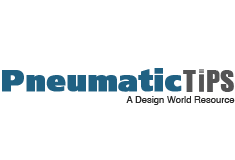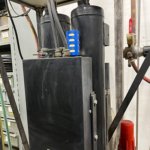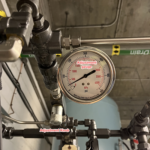
An air compressor at a metal processing plant had a troubled life. It started out as a VSD controlled machine, but a fire damaged the controls. Because of this, a new VSD was installed. It didn’t match the old drive, so wiring was altered to accommodate.
Next, the drive failed due to dust contamination and the unit was converted to fixed speed operation. Again, more control modifications were added. Over the years, more wiring was updated and modified to change the compressor starter and add monitoring. After each change, the wiring inside to control panel got more and more confusing. Eventually, the panel became a rat’s nest of wiring, representing a safety hazard. Today, this panel — with open 600-volt connections — would never meet safety standards.
When dealing with compressors like this, it is important to work very carefully to ensure hazards are eliminated. Some suggestions:
- Only qualified and trained individuals should be allowed to work on electrical panels. Ensure that workers have the necessary knowledge and skills to perform the task safely.
- Wear appropriate PPE, including safety glasses, insulated gloves, flame-resistant clothing, and other necessary gear as specified by your company’s safety guidelines.
- Before opening the panel, ensure that it is de-energized. Follow proper lockout/tagout procedures to isolate and disconnect the power supply to the panel.
- Use a voltage tester or multimeter to verify that the panel is de-energized. Test the voltage on both the line and load sides of the panel to ensure there is no residual voltage.
- Lock and tag the panel to prevent accidental re-energization while work is being performed. Each person working on the panel should apply their individual lock.
- Clearly label each circuit with its corresponding function and voltage rating. Ensure that circuit diagrams and documentation are up to date.
- Before opening the panel, visually inspect it for any signs of damage, such as burnt or melted components, loose connections, or unusual odors. Report any issues to maintenance personnel.
- When working inside the panel, use insulated tools designed for electrical work to reduce the risk of electrical shock.
- Keep a safe distance from live components and ensure that there is sufficient clearance around the panel for ventilation and emergency access.
- Be familiar with emergency procedures, including how to de-energize the panel quickly in case of an unexpected event.
- Ensure that all personnel working on electrical panels have received appropriate training and are certified to perform the specific tasks required.
By following these safety steps, you can minimize the risk of accidents and injuries when working on hazardous electrical panels. Always prioritize safety and consult your company’s safety guidelines and relevant regulations.





The third bullet point is “Make sure that the panel is de-energized.” THEN follow lockout and tag out procedures.
If the panel really is de-energized then the PPE is not really needed. My simple precaution has been that after the lockout and tag-out, I disconnect the main feed at the locked out switch, and lock the switch enclosure. With all the power redundantly removed work can be much faster and safer.. AND to assure getting it right the first time, ALL of those involved need to understand the project prior to the start of work. No “qualified but unknowing” workers allowed.